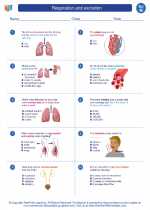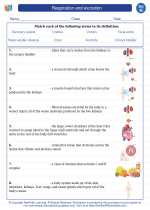Frontal Rain
Frontal rain occurs when a warm air mass and a cold air mass meet. The warm air is forced to rise over the denser, colder air. As the warm air rises, it cools, and its water vapor condenses, forming clouds and precipitation.
Key Concepts:
- Fronts: Frontal rain is associated with the meeting of warm and cold air masses at a front.
- Warm Fronts: When warm air overtakes cold air, it rises gently, producing steady, prolonged rain.
- Cold Fronts: When cold air displaces warm air, it rises steeply, leading to intense, short-lived rainfall.
- Occluded Fronts: Form when a cold front catches up to a warm front, producing a mix of warm and cold sector air that can result in prolonged rainfall.
Formation of Frontal Rain:
Frontal rain is formed as follows:
- Meeting of Air Masses: A warm air mass and a cold air mass meet at a front.
- Forced Upward Movement: The warm air is forced to rise over the cold air due to differences in density.
- Condensation: As the warm air rises, it cools and its water vapor condenses, forming clouds.
- Precipitation: The condensed water vapor falls as rain when the cloud droplets coalesce and become heavy enough to overcome air resistance.
Effects of Frontal Rain:
Frontal rain can have significant effects on weather and ecosystems, including:
- Rainfall: Frontal rain can result in prolonged, steady rainfall or intense, short-lived downpours, depending on the type of front.
- Temperature Changes: Frontal passages often bring changes in temperature as warm air is replaced by cold air or vice versa.
- Ecological Impact: Frontal rain can provide essential moisture for plants and ecosystems, supporting agricultural activities and natural habitats.
- Storms: Frontal systems can trigger thunderstorms and severe weather events, especially when associated with cold fronts.
Study Guide:
Use the following study guide to review and reinforce your understanding of frontal rain:
- Define frontal rain and its association with air masses at fronts.
- Describe the formation of frontal rain, including the role of warm and cold air masses.
- Differentiate between warm fronts, cold fronts, and occluded fronts, and explain how each type of front contributes to frontal rain.
- Discuss the effects of frontal rain on weather, temperature, and ecosystems.
- Identify and analyze real-world examples of frontal rain events and their impact on local and regional environments.
By mastering the concepts and processes associated with frontal rain, you can develop a deeper understanding of weather systems and their influence on the environment.
[Frontal Rain] Related Worksheets and Study Guides:
.◂Science Worksheets and Study Guides Eighth Grade. Respiration and excretion
Study Guide Respiration and excretion
Respiration and excretion  Worksheet/Answer key
Worksheet/Answer key Respiration and excretion
Respiration and excretion  Worksheet/Answer key
Worksheet/Answer key Respiration and excretion
Respiration and excretion  Worksheet/Answer key
Worksheet/Answer key Respiration and excretion
Respiration and excretion  Vocabulary/Answer key
Vocabulary/Answer key Respiration and excretion
Respiration and excretion  Vocabulary/Answer key
Vocabulary/Answer key Respiration and excretion
Respiration and excretion  Vocabulary/Answer key
Vocabulary/Answer key Respiration and excretion
Respiration and excretion  Vocabulary/Answer key
Vocabulary/Answer key Respiration and excretion
Respiration and excretion 

 Worksheet/Answer key
Worksheet/Answer key
 Worksheet/Answer key
Worksheet/Answer key
 Worksheet/Answer key
Worksheet/Answer key
 Vocabulary/Answer key
Vocabulary/Answer key
 Vocabulary/Answer key
Vocabulary/Answer key
 Vocabulary/Answer key
Vocabulary/Answer key
 Vocabulary/Answer key
Vocabulary/Answer key
